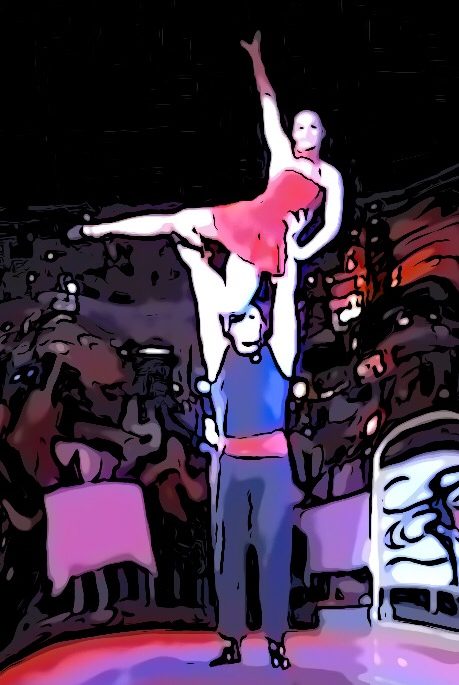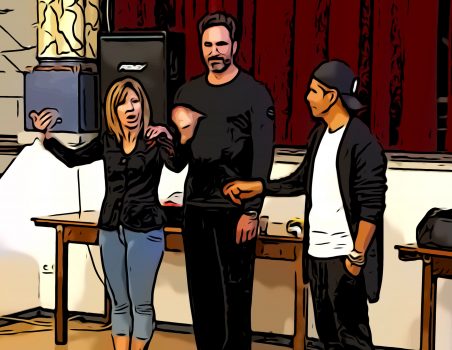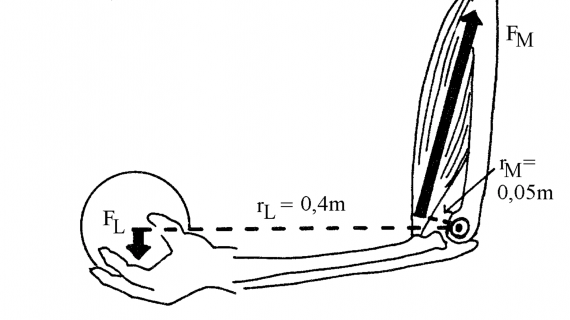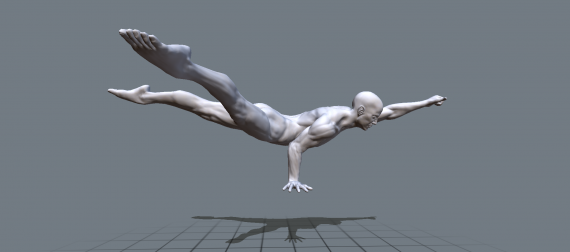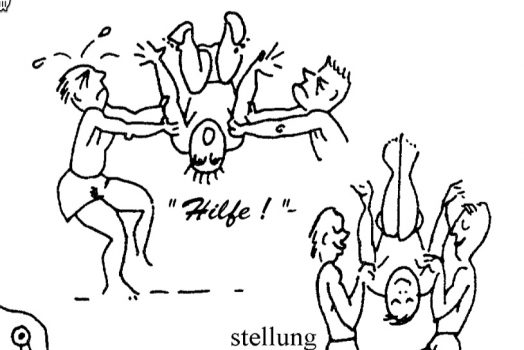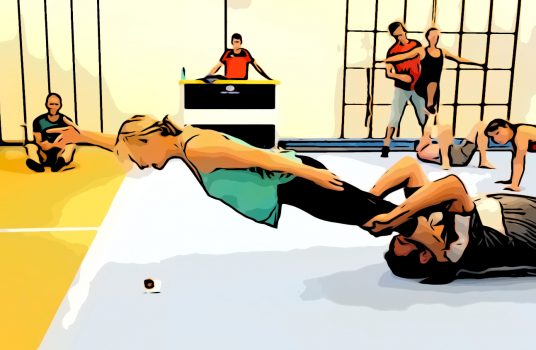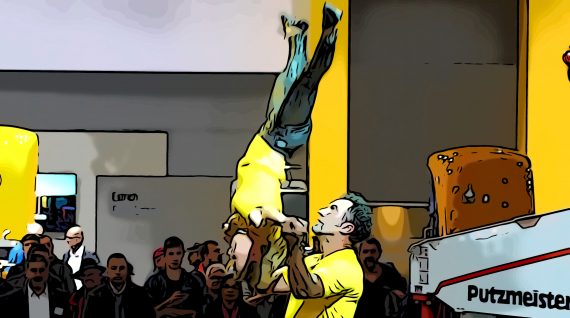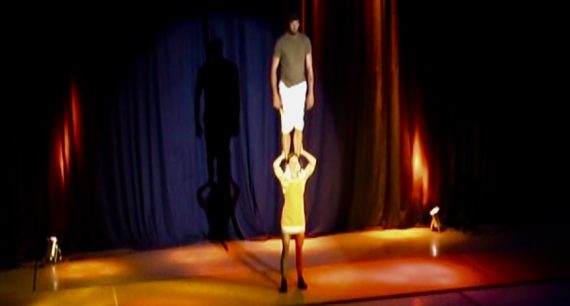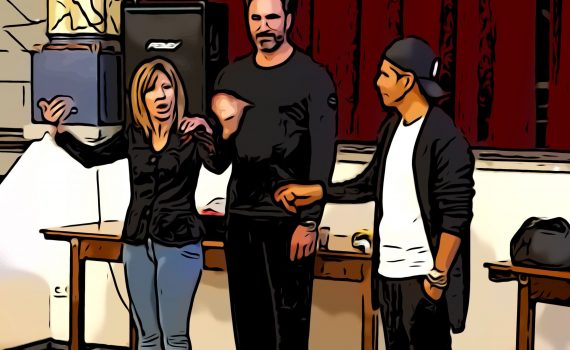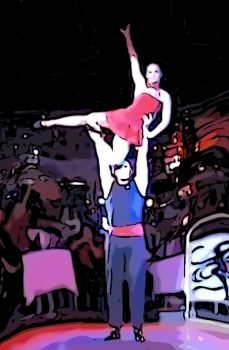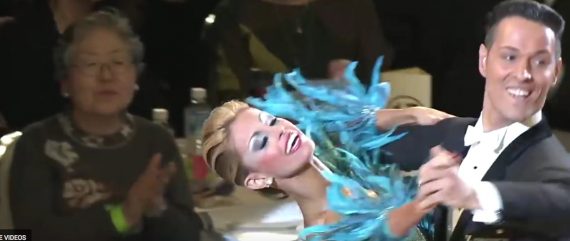There is hardly anything that is discussed as complex as the dance posture. Interestingly, roles are already derived by the arm posture. When asked why the leader has the left arm on top, so far I’ve never received a biomechanically plausible answer from world champions. Dancing is by nature a ritual that reflects a sense of intimacy between the sexes, especially in couple dancing. Therefore, a dance touches me only when the dancers stay in their roles. For me especially the comparison with paintings and frames fits. The woman is the painting and the Lord is the frame. The frame […]
Yearly archives: 2018
“La Caminata” literally means “mountain hike”. However, a Grande Maestro from Argentina gets glowing eyes while using it and talks about how the tango step is “right” to perform.The hard step approach of the ballroom dancers (with a strong staccato in the footflick*) is not much appreciated in Tango Argentino. The step approach should be rather soft and correspond to the weight transfer of the danced emotion. Since the Tango Argentino does not specify any fixed step patterns, the rhythm is also freely selectable. I see the art of the tango therein is to musically shape the weight transfer and […]
Since 2017, more and more workshops on the subject of music are offered. Argentine maestros explain the transformation of Tango Argentino over the decades in their workshops. The tango boom in Argentina began when the radio prevailed in Argentina. However, the quality of the sound recordings was very noisy and are unacceptable for the current state of the art (even though tango jockeys always want to make us happy with these old recordings). Mostly the same songs are from a current band in excellent quality … and I think an artist is allowed to make a good living already during his […]
When looking at biomechanics I am less concerned with the exact derivation of mechanical and biological principles, but more with the consequences for acrobatics … Mechanics: Acrobats are essentially dealing with 3 energies. Potential, kinetic and rotational energy. These energies have as common quantities: the mass and the force vector. The mass is for an acrobat a very personal given size, which is also associated with its available power (= m * a). It determines significantly whether a person should be a flyer or a base. In addition, you can’t change much the mass of a person in a short-term […]
Below are a few forms of the flyer in the handstand (HS) → to achieve the desired shape different tactics are useful. Froghandstand → pick up the weight from your feet straight HS → rolls, half wheel turn, flic, cascade or pull with force Scorpion → first straight HS, then pull your feet towards your head, at the same time close your shoulder Mexican → first straight HS, then overturn the body, at the same time cover the shoulder Crocodile in hand balances (counts to the category 1-arm!) 7 → first straight HS, then towards Mexicans and at the […]
In principle, the safety-helper (spotter) should know the trick itself, so that he recognizes the potential dangers in good time. Arrangements: First, the helper is informed, which trick to secure and what is expected of them. In principle, the helper is never directly in front of or behind the base so that no-one does stumble during a correction step. As soon as more than one correction step is necessary, the base breaks off, otherwise it forces the helper(s) to run along. A helper can not catch well, while he moves! An unintentionally rotating base also forces the helper to move. […]
There are 2 contact points within the libra. One is on pressure, the other one is pulling. So pretty much any position is possible where base and flyers can get hooked with hand or foot. The flyer will not kept in the center of gravity and balanced. The pressure-contact point is mechanically seen an axis of rotation, via which the flyer is held in the air by means of a lever. The resulting shear forces are desirable and necessary, but should remain smooth! The weight of the flyer must be balanced with a corresponding counterweight from the base via this […]
As a flyer you are usually more endangered than the base. This leads to the fact that the flyer must estimate the risk and act accordingly carefully → safety assistance! In 10 years of beginner training, my perception is that most of them already have made similar sports (lateral entrants) before. Appearing as an experienced, carries the risk that the others misjudges the risk of injury. I always recommend a few warm-up exercises on the ground before engaging in risky tricks with a new partner. I have already met professional acrobats who did not know how to do the flyer sideward. […]
The tubular bones of the birds are known to be extremely stable against shearing forces. After all, cannons were built according to this principle. In comparison, however, the best base is as stable as a straw. In favor the flyer on the base does not really have to be able to balance himself. In the best case, a flyer can do both, mostly it’s better for the base to get the control, especially if the flyer has reached the shape and weight of an adult. In sports acrobatics, the difference in size between partners rightly enters into the scoring. Useful […]
How to define success? Well … Wikipedia’s recipe uses 2 ingredients, the goal and the implementation competence. Although everyone defines their own goals, for me in tango it is clearly the connection between woman, man and music. I remain aware of the division between man and woman, as Leader and Follower assume a role assignment, which personally I do not see. A woman always remains a woman, even if she takes the role of leadership. A division into painter and brush carries the same problem. I understand the implementation competence required by Wikipedia as the necessary “basics”: the posture, the […]
… can you imagine, how the Tango Argentino is developing to? Here are some suggestions … Tango Canyengue Tango de salón: Milonguero, Villa Urquiza Tango Petitero: Estilo Milonguero Tango Nuevo: Neotango, Nontango Tango Escenario Tango acrobático Finnish Tango:
The Neanderthals were once the successful model of evolution. And I do not mean that ironically! 1925: Posture: heads side by side, arms hanging Dynamics: stationary, springy, quarter turns Leadership: monologue, arms moving 1931: Posture: hand on middle back, head position further apart Dynamics: more expansive Guided tour: monologue, choreography, calm arms 1960: Posture: focus on presentation, hand on shoulder, quiet topline Dynamics: expansive and floating Leadership: monologue, choreography 1979: Posture: presentation focused to woman, body position turned to each other Dynamics: more open foot positions Leadership: choreography with active woman 1998: Posture: maximum presence, head of the woman paints […]
